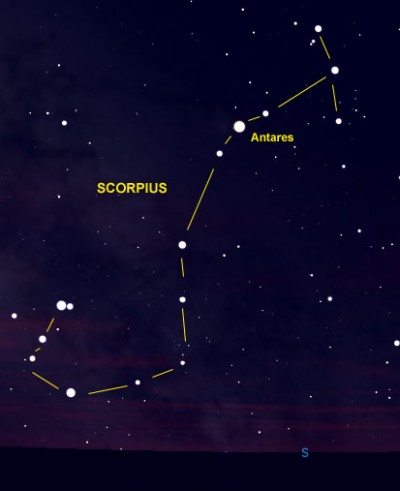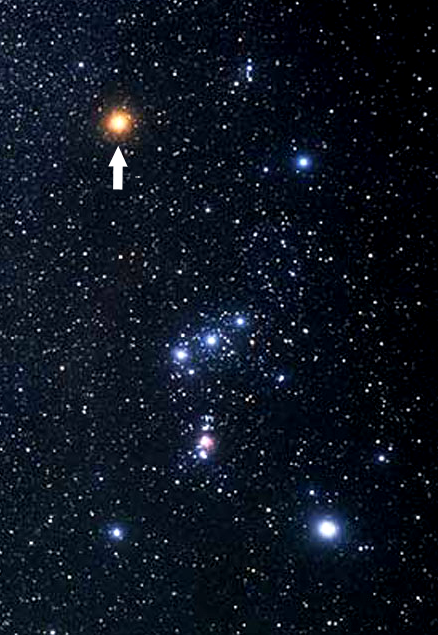THE SOUTHWORTH PLANETARIUM
207-780-4249 www.usm.maine.edu/planet
70 Falmouth Street Portland, Maine 04103
43.6667° N 70.2667° W
Altitude: 10 feet below sea level
Founded January 1970
Julian date: 2458743.5
2019-2020: XII
"Is life not a thousand times too short for us to bore ourselves?"
-Friedrich Nietzsche
THE DAILY ASTRONOMER
Wednesday, September 18, 2019
Changing of the Supergiants
If the morning chill, the reduced daylight duration, and the splashes of vibrant foliage against forest green weren't enough of an indication, the arrival of astronomical autumn is imminent. Along with this lamentable shift from sultry summer heat to metabolism dampening cold, we can observe the early evening setting of one red supergiant, Antares, and then, many hours later, the pre-dawn rising of another red supergiant, Betelgeuse. The former forms a scorpion's heart, the second, a hunter's shoulder.


Out with the old, in with the old
The red supergiant Ahtares starts the evening low in the southwestern sky while the red supergiannt Betelgeuse rises in the pre-dawn eastern sky. Both stars are toward the end of their life cycles and, consequently, are bloated red supergiants millions of times larger than the Sun.
The red supergiant Ahtares starts the evening low in the southwestern sky while the red supergiannt Betelgeuse rises in the pre-dawn eastern sky. Both stars are toward the end of their life cycles and, consequently, are bloated red supergiants millions of times larger than the Sun.
The seasonal shift from summer to autumn is always* accompanied by the changing of the supergiants. Antares will soon set into dusk while Betelgeuse ascends into greater prominence. By early winter, Betelgeuse and its host constellation, Orion, will dominate the evening sky while Scorpius slowly claws its way out of dawn's early light. By February, the scorpion will return to full visibility, albeit briefly in the pre-dawn. In mid May, Betelegeuse will vanish in the dusk and Antares will rise in the mid evening, only to become prominent in the south by June, when Betelgeuse is hidden behind the Sun.
When Betelgeuse is visible in our sky, Antares is not and vice versa. Mythologically, Scorpius the Scorpion was said to have killed Orion after he openly boasted about his hunting prowess. Both Orion and Scorpius were honored with prominent places in the firmament, but were set in opposite regions so as never to battle again.
Astronomical autumn begins soon in the Northern Hemisphere: on September 23, to be precise. As we approach Autumn, Antares approaches the setting Sun and Betelgeuse rises earlier each morning. Another seasonal cycle continues with the changing of the supergiants.
*Yes, it will not ALWAYS be this way. Earth's precessional wobbling will shift the star positions through a 26,000 cycle so that Scorpius will eventually be a prominent winter star while Orion looms high in the summer. However, these shifting is so gradual that it won't affect the night skies of our life time.
TO SUBSCRIBE OR UNSUBSCRIBE FROM THE "DAILY ASTRONOMER" LIST-SERVE: